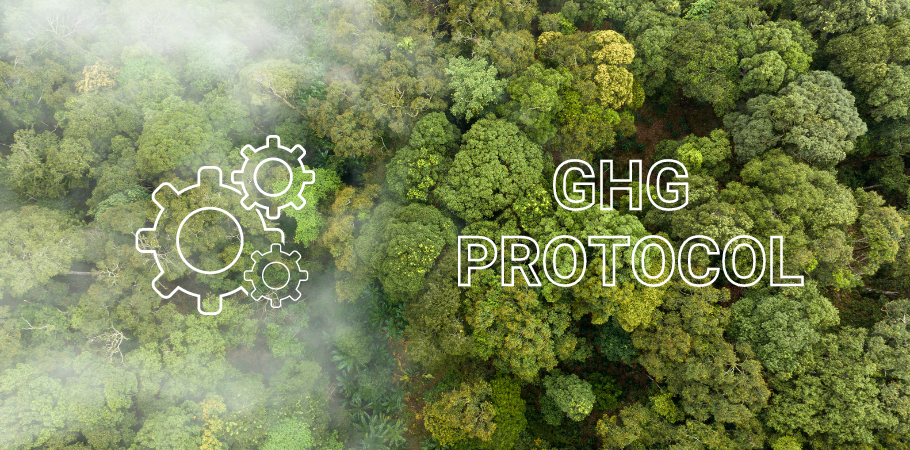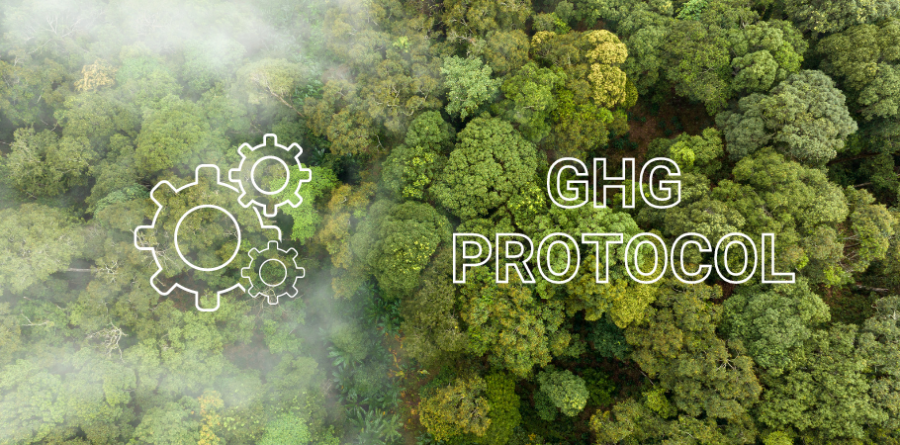
What is GHG protocol? The GHG protocol provides standards to form a common basis for many systems for measuring and reporting greenhouse gas emissions.
In this article, we will explore what is the GHG Protocol’s scope and standard. Besides, let’s find out some benefits it could bring to your businesses.
What is GHG Protocol?
Established in 1990, the Greenhouse Gas Protocol (GHG) is an organization formed from the collaboration between the World Resources Institute (WRI) and the World Business Council for Sustainable Development (WBCSD).
The GHG Protocol is an international set of guidelines developed by the World Business Council for Sustainable Development and the World Resources Institute, or the GHG (greenhouse gas) reporting protocol.
Today, GHGP helps companies reduce greenhouse gas emissions by setting standards to assist them in managing their emissions. In other words, they provide standards and guidelines for businesses and governments to measure and manage the amount of GHGs.
Nations and enterprises that have committed to the Paris Agreement are obligated to reduce their greenhouse gas emissions. To do so, they have to track, disclose, and mitigate its emissions by adhering to established criteria like those outlined in the GHG Protocol.

In short, the GHG protocol can provide a unified framework for emissions management. Therefore, it has played a pivotal role in promoting decarbonization across operations in the public and private sectors. And, organizations must ensure they source a decarbonization platform that aligns with the principles of the GHG Protocol.
Who does the GHG Protocol Apply to?
The GHG Protocol applies to a number of entities, including:
- Businesses: In 2016, 92% of Fortune 500 companies responding to the CDP used GHG Protocol directly or indirectly through a program based on GHG Protocol. It provides the accounting platform for virtually every corporate GHG reporting program in the world.
- Governments: State agencies use the GHG protocol to help support the formulation of policies and strategies to reduce emissions. From there, it is easy to achieve global climate goals.
- NGOs: Non-governmental organizations (NGOs), non-profits, and other charities can also use the GHG protocol to assess their emissions, thereby promoting sustainable practices.
- Cities and municipalities: They can apply the GHG protocol to urban areas to measure and manage emissions. For example, in traffic and construction.
- Suppliers: Many large businesses and organizations now require suppliers and their partners to report emissions. Besides, expanding the scope of application of the GHG protocol across the entire supply chain is also important.

- Investors: Thanks to the GHG Protocol, investors and financial institutions can assess the performance of their businesses, their responsibilities to the environment and the community, as well as the level of risk when lending.
- Academic and research institutions: Universities and research institutions can use the GHG Protocol to study emission trends. Moreover, it can evaluate the effectiveness of policies and contribute to improving society’s understanding of climate change issues.
- Consulting firms: Through GHG protocol, environmental and sustainability consulting companies can provide customers with expert advice on emission measurement and management.
- Industry associations: Trade associations and industry groups can adopt the GHG Protocol to establish standardized emission measurement practices.
What is GHG Protocol Scope?
The GHG Protocol has classified greenhouse gas emissions into 3 different scopes, specifically as follows:
- Scope 1: The amount of greenhouse gas emissions directly from the operation of organizations and factories. These emissions are under the control of the organization.
- Scope 2: Refers to indirect emissions, related to the production of electricity, heat, and steam purchased and used by the company. This is the amount of emissions caused in the energy production process of the supplier
- Scope 3: Includes all indirect GHG emissions that companies don’t own or control across the entire supply chains.
GHG Protocol Standards
What is GHG protocol standard? The GHG protocol provides templates for various entities such as businesses, governments, and cities to measure and report emissions. These include:
- The Corporate Standard: Instructs agencies and NGOs on how to prepare an inventory at the corporate level.
- GHG Protocol for cities: Helps measure and report on greenhouse gas emissions at the municipal level on a community scale.
- The Mitigation Goal Standard: Helps countries and cities develop emission reduction targets and guides the approach to achieving them.
- The corporate Value Chain Scope 3 Standard: This standard helps businesses assess the impact of the entire value chain. Besides, it helps them identify key tasks to reduce emissions.
- The Policy and Action Standard: A standardized approach to estimating the GHG impact of policies and actions.
- The Product Standard: A standard for calculating the total amount of emissions in a product’s life cycle and how to best reduce greenhouse gasses.
Benefits When Businesses Meet GHG Protocol Standards
If the Water Resources Science Institute (WRI) validates and evaluates an organization/product/service according to GHG Protocol standards, it will have a higher value. WRI is a reputable organization with expertise in the GHG Protocol. Therefore, their endorsement will help increase the reliability and quality of your resources.
1. Improving quality
WRI will test resources/products/services to ensure that they fully meet the GHG Protocol standards. If there are any errors, WRI will correct or resolve them with the owner to improve and enhance the quality.
2. Ensuring credibility
Moreover, the GHG Protocol is trustworthy because of the contribution of experienced experts in greenhouse gasses. When you see the words “Built on the GHG Protocol”, you can rest assured that the resource/service/product has been thoroughly tested and meets GHG Protocol standards. And, this shows that the resource is very reliable for users.
3. Spreading the brand
Resources/products/services that are confirmed to be “Built on GHG Protocol” will be posted on the official website of GHG Protocol. This site attracts more than eighteen thousand views per month. Therefore, businesses can enhance brand awareness effectively.
See more: Greenhouse Gas Emissions: How to Measure and Calculate


